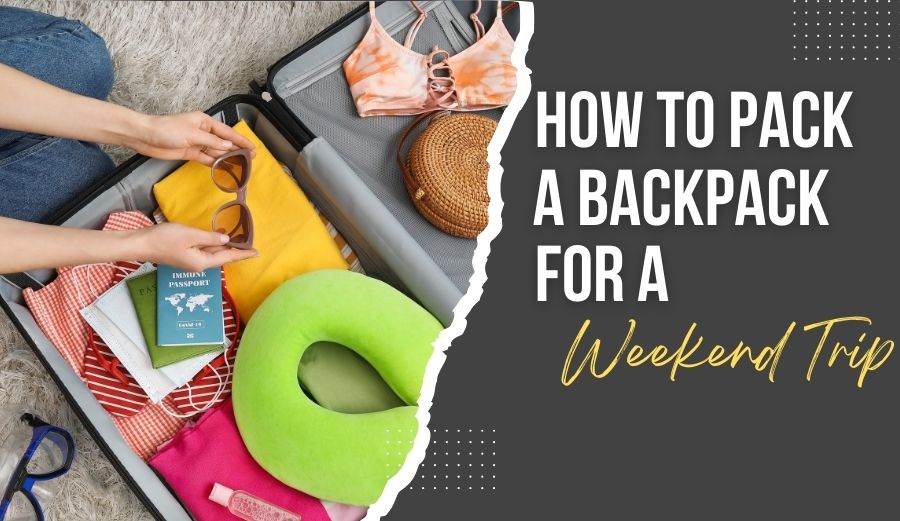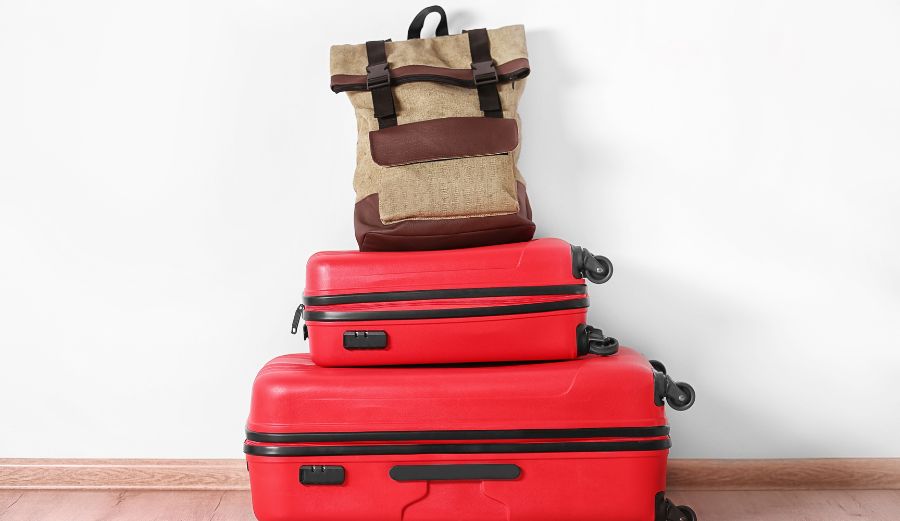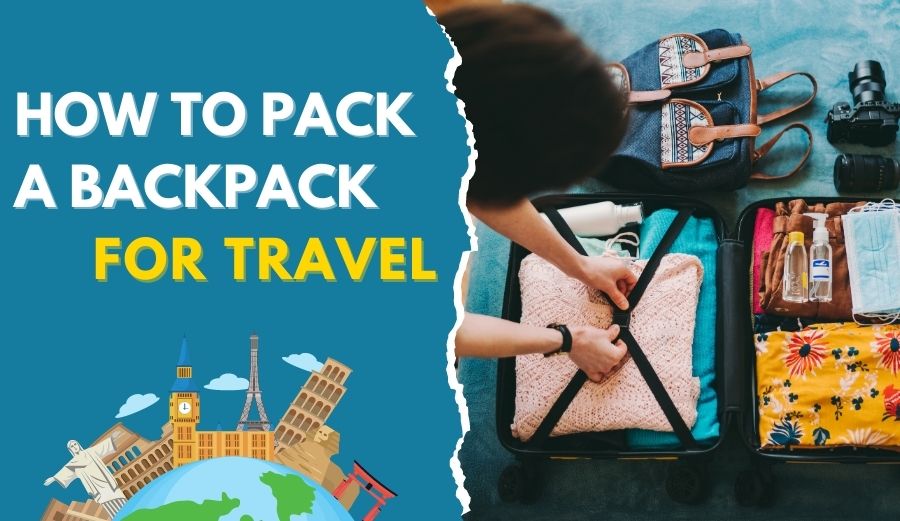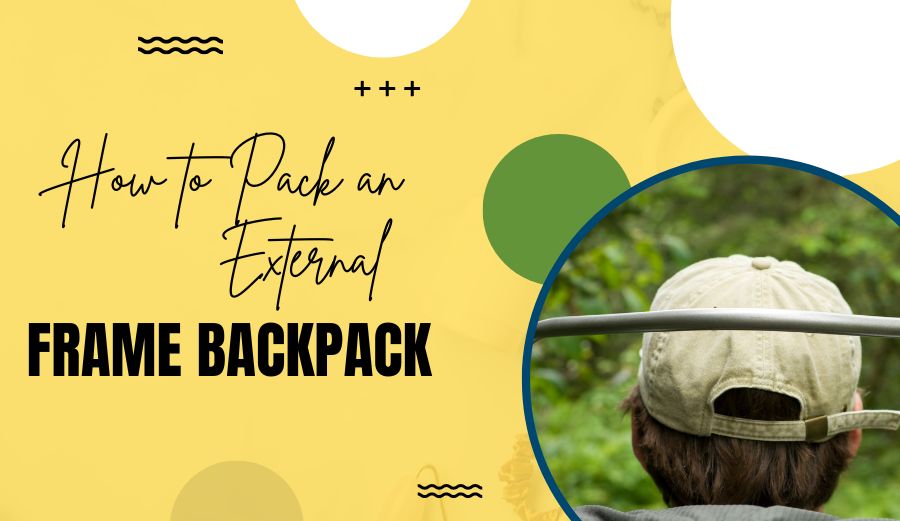How to Pack a Backpack for a Weekend Trip: Travel Light and Smart
Embarking on a weekend adventure? Unlock the secrets of efficient packing with our guide on ‘How to Pack a Backpack for a Weekend Trip.’ Maximize space, minimize stress, and elevate your travel experience from the get-go!

Got a weekend trip on the horizon? 🌄 Backpack packing blues? Fret not! 🎒✈️ ‘How to Pack a Backpack for a Weekend Trip‘ is your ticket to stress-free travel. Whether you’re a minimalist or a ‘just-in-case’ packer, our guide is tailor-made for all adventurers.
Say goodbye to rummaging and hello to a perfectly organized backpack adventure. Get ready to unlock the art of savvy packing and make every ounce count! Let’s revolutionize the way you travel, one item at a time.
Table of Contents
ToggleWeekend Escapes Made Easy: Your Packing Proficiency Kickoff

The thrill of adventure fills the air when the promise of a weekend getaway beckons. Amidst this excitement, one crucial aspect often takes center stage: efficient packing.
While it might seem minor, the art of packing a backpack smartly can significantly impact the entire journey. This section delves into why mastering packing light and right is vital to turning your weekend escape into an unforgettable experience.
The Significance of Efficient Packing for a Weekend Getaway
In the realm of short trips, time is a precious commodity. Imagine arriving at your destination and immediately immersing yourself in exploration rather than spending undue hours wrestling with an overstuffed bag. This is where efficient packing plays its part. With careful planning, you can bypass the hassle of lugging around unnecessary items and focus on making memories instead.
Unveiling the Advantages of a Well-Packed Backpack
Beyond the apparent convenience, a well-organized backpack offers an array of benefits. Firstly, it grants you a sense of control over your journey. Each item in its designated place means no frantic rummaging for essentials. Secondly, it elevates your mobility. A streamlined bag lets you navigate through bustling airports and city streets effortlessly.
As a bonus, well-planned packing can even translate into financial gains, saving you from excess baggage fees and impulsive purchases.
In the upcoming sections, we’ll delve deeper into the strategies and tactics to revolutionize your packing game.
From versatile clothing choices to packing hacks that maximize space, you’re about to embark on a journey of mastering the art of packing a backpack for a weekend trip. So, gear up, and let’s dive into the world of efficient and effective packing.
Choosing the Right Backpack

As you embark on your journey, choosing the right backpack is the first step toward a successful weekend getaway. The size and style of your bag can make or break your packing experience. This section is your compass to navigate the sea of options and find the backpack that suits your needs like a glove.
Navigating Backpack Size and Style
When it comes to backpacks, one size definitely does not fit all. The right size depends on the duration of your trip and the nature of your adventure. A compact daypack might be ideal for a minimalist urban escape. At the same time, a slightly larger backpack can accommodate extra clothing layers for diverse weather conditions.
Comfort and Weight Distribution: Your Travel Partners
Imagine traversing cobblestone streets or trekking along a forest trail with an uncomfortable backpack. That’s where comfort steps in. Padded shoulder straps, adjustable belts, and ventilation systems provide a comfortable carrying experience.
Moreover, how you distribute weight within the backpack affects your balance and overall comfort. Place heavier items closer to your back’s center of gravity to prevent strain. This consideration is crucial for longer journeys, ensuring you remain energized.
In the upcoming sections, we’ll delve deeper into the nuances of efficient packing, but first, let’s ensure your vessel for adventure is perfectly tailored to your needs. So, let’s search for the ideal backpack to accompany you on your weekend escapade.
Essential Packing Tips

Packing for a weekend trip is a craft that can transform your experience from chaotic to seamless. This section unveils a treasure trove of essential packing tips to revolutionize your preparation for your getaway.
Packing Strategy: Mastering the Art of Preparation
- Minimalist vs. Comprehensive Approach: Begin by determining your packing philosophy. Are you a minimalist traveler who thrives on essentials, or do you prefer having options at your fingertips? Strike a balance that aligns with your travel style.
- Layering Technique: When packing clothes, think like a puzzle master. Layering your clothes not only saves space but also helps prevent wrinkles. Place heavier garments at the bottom and lighter ones on top, ensuring a well-organized ensemble.
- Rolling vs. Folding: The eternal debate continues, and for good reason. Rolling clothes saves space and minimizes creases while folding keeps items neat and organized. Experiment with both methods to find what suits your items best.
With these foundational strategies, you’re ready to transform your packing game. The upcoming segments dive into clothing choices, toiletries, gear, and organization techniques that will make your backpack a marvel of efficiency. Let’s delve into the heart of the packing process and prepare for a weekend trip like never before.
Clothing and Accessories
When crafting the perfect weekend travel wardrobe, the secret lies in versatility and thoughtful planning. Your clothing and accessory choices are essential to seamless packing and stylish comfort.
- Versatile Clothing Choices: Mixing and Matching Outfits: Opt for pieces that can be easily mixed and matched. Neutral colors and adaptable styles ensure multiple outfit combinations without excess baggage.
- Weather Considerations: Packing for Different Conditions: Check the weather forecast at your destination and pack accordingly. Lightweight layers can help you stay comfortable in varying temperatures.
- Accessories: Hats, Sunglasses, Scarves, etc.: Accessories can transform an outfit while occupying minimal space. A stylish hat, a pair of sunglasses, or a versatile scarf can add flair to your look without burdening your backpack.
Toiletries and Personal Care
Efficient packing extends to your toiletries and personal care essentials. Streamlining this aspect can save space while ensuring you have everything you need.
- Travel-sized Toiletries: Efficient Use of Space: Opt for travel-sized toiletries or transfer your essentials into smaller containers. This approach not only conserves space but also prevents leaks and spills.
- Reusable Containers: Minimizing Waste: Invest in reusable travel containers for shampoo, conditioner, and lotion items. This eco-friendly choice reduces waste and keeps your toiletries organized.
- Essential Personal Care Items: Medications, Hygiene Products, etc.: Prioritize necessary medications and hygiene products. Keep them readily accessible, ensuring your well-being throughout the trip.
Gear and Equipment
Your gear and equipment play a pivotal role in ensuring you’re prepared for your weekend adventure’s activities and tech needs.
- Multi-purpose Gear: Items with Multiple Uses: Choose items that serve multiple purposes. A versatile scarf could double as a blanket, while a flashlight might function as a lantern.
- Tech and Gadgets: Chargers, Power Banks, etc.: Remember your tech essentials. Pack chargers, power banks, and any necessary adapters to keep your devices powered and connected.
- Outdoor Activities: Tailoring Gear to the Trip’s Activities: Pack appropriate gear if your plans involve outdoor adventures. Whether hiking shoes, swimsuits, or compact rain jackets, ensure you’re well-equipped.
With expertly packed clothing, accessories, toiletries, and gear, you’re heading to an organized and enjoyable weekend trip. The following sections delve into organizational techniques and top-notch travel hacks to ensure your journey is as smooth as possible.
Organizing and Packing Techniques

Once you’ve selected your items, the challenge is to arrange them to maximize space, minimize hassle, and ensure easy access throughout your journey. This section is about strategic organization and packing techniques that will transform your backpack into a well-orchestrated symphony of efficiency.
1. Properly Distributing Weight for Comfort
A well-balanced backpack is essential for a comfortable journey. Place heavier items, like shoes or toiletries, close to your back’s center of gravity. This arrangement prevents strain and maintains stability, allowing you to move quickly.
2. Using Packing Cubes, Compression Bags, and Dividers
Enter the secret weapons of organized packing: packing cubes, compression bags, and dividers. These tools are game-changers. Packing cubes keep similar items together and enable effortless retrieval. Compression bags eliminate excess air, reducing bulkiness. Walls create compartments, preventing chaos within your backpack.
3. Keeping Essentials Easily Accessible
Imagine needing your passport or a snack, only to delve into a labyrinth of items. Avoid this by keeping essentials at arm’s reach. Outer pockets or a top compartment can house items you’ll need frequently. Things like water bottles or maps should be easily accessible to quench your thirst for exploration without interrupting the flow.
With these techniques, your backpack becomes a masterpiece of organization, ensuring your trip is marked by convenience and serenity. The following sections will walk you through a comprehensive packing checklist and unveil ingenious travel hacks that transform your packing game from novice to pro. Let’s unravel the art of impeccable organization and elevate your weekend adventure.
Packing Checklist

Embarking on a weekend journey requires meticulous planning, and a comprehensive packing checklist is your ultimate tool for ensuring that no essential item is left behind. This section presents a detailed guide that covers everything from clothing to crucial documents, leaving no room for oversight.
Comprehensive Checklist of Items to Pack
- Clothing:
- Tops, bottoms, and undergarments
- Outerwear (jackets, sweaters)
- Sleepwear and loungewear
- Swimwear (if applicable)
- Socks and footwear
- Toiletries and Personal Care:
- Toothbrush, toothpaste, and floss
- Shampoo, conditioner, and soap
- Skincare products and cosmetics
- Hairbrush or comb
- Deodorant and any necessary medications
- Accessories and Gear:
- Sunglasses and hats
- Electronics (phone, charger, power bank)
- Camera and related equipment
- Outdoor gear (hiking shoes, raincoat)
- Entertainment (books, headphones)
- Essential Documents and Items:
- Identification (passport, driver’s license)
- Travel itinerary and tickets
- Accommodation details
- Emergency contacts and medical information
- Any required visas or travel permits
Reminders for Documents, Tickets, and Important Information
Before sealing your backpack, double-check that all the documents and information are securely stored. Ensure your identification, travel itinerary, and accommodation details are easily accessible. Keep physical and digital copies of essential documents, and consider having a backup plan for accessing them in case of unforeseen circumstances.
As you tick off items from this comprehensive checklist, you’ll experience a sense of preparedness that sets the tone for a smooth, stress-free weekend trip. In the subsequent sections, we’ll unveil top-notch travel hacks and practical advice that add finesse to your packing expertise. Let’s explore the final stretch of your journey toward a masterfully packed backpack and an unforgettable adventure.
Top Travel Hacks

Elevating your packing game involves what you pack and how you fill it. This section will uncover ingenious travel hacks that transform your approach to packing. From delicate items to maximizing every inch of space, these hacks are your passport to an expertly organized backpack.
Efficiently Packing Fragile Items
- Wrap and Protect: Use soft clothing items, like scarves or socks, to wrap delicate items, such as glass bottles or souvenirs. This cushions them against impact and prevents breakage.
- Layer with Care: Place fragile items in the center of your backpack, surrounded by cushioning layers of clothing. This minimizes movement during transit.
- Utilize Pockets: Utilize internal pockets or compartments for small, fragile items. They’re more protected within the confines of your backpack.
Utilizing Dead Space for Small Items
- Sock Storage: Roll up small items like chargers, earphones, or jewelry and tuck them inside socks. This not only protects them but also makes use of seemingly unused space.
- Shoe Stash: Shoes often have gaps that can house more minor items. Utilize these gaps to store socks, rolled-up underwear, or even travel-sized toiletries.
- Mesh Bag Magic: Use a mesh laundry bag to corral loose items like snacks, a travel pillow, or a water bottle. Attach the bag to the inside of your backpack for easy access.
Incorporating these travel hacks into your packing routine will make the most of every nook and cranny within your backpack. As we approach the final section, you’ll discover parting insights and encouragement that will inspire you to embark on your weekend journey with the confidence of a seasoned traveler. Prepare to embark on your adventure with a backpack that’s a masterpiece of efficient packing!
Carry-On vs. Checked Baggage

Choosing between carry-on and checked baggage is a pivotal decision that can significantly impact your travel experience. This section delves into the pros and cons of each option, guiding you through the factors to consider when deciding how to transport your well-packed backpack.
Pros and Cons of Each Option
Carry-On Baggage:
Pros:
- Speed and Convenience: No waiting at baggage claim, saving you time.
- Reduced Risk: Your bag stays with you, minimizing the chances of loss or damage.
- Cost Savings: Many airlines offer cheaper fares for travelers with carry-on bags only.
Cons:
- Limited Space: Smaller size restricts the amount you can pack.
- Strict Regulations: Adherence to airline size and weight limits is crucial.
Checked Baggage:
Pros:
- More Space: Larger allowance for items and clothing.
- Comfort: No need to carry a heavy bag during your flight.
- Liquids and Toiletries: Packing more significant quantities of fluids is easier.
Cons:
- Wait Time: Time spent at baggage claim can be lengthy.
- Risk of Loss: Baggage can be misplaced or delayed.
- Fees: Some airlines charge fees for checked bags.
Considerations for Airline Restrictions and Fees
Before making a decision, research the baggage policies of your chosen airline. Consider factors such as weight limits, size restrictions, and potential fees for checked bags. Assess your trip’s requirements – a well-packed carry-on might suffice if you’re going on a short weekend getaway. For longer trips, checked baggage could accommodate more items.
Ultimately, the choice between carry-on and checked baggage depends on your priorities, travel duration, and personal preferences. As we approach the conclusion of this guide, we’ll wrap up with a summary of key insights and tips to ensure you’re ready to embark on your weekend adventure armed with the knowledge to pack effectively.
Wrapping Up
As you prepare for your weekend journey, let’s summarize the insights you’ve gained to ensure your packing process is seamless and your adventure unforgettable. This final section offers last-minute guidance and a dose of encouragement to set the stage for a successful trip.
Final Tips for Stress-Free Packing
- Double-Check Your Checklist: Check your packing checklist to ensure you have all essential items. It’s the best way to prevent those “Oops, I forgot…” moments.
- Organize and Label: Keep items organized using packing cubes or compartments. Labeling pockets or sections can further streamline access.
- Pack with Intention: Each item you pack should serve a purpose. Avoid the temptation to overpack with unnecessary items.
Encouragement for Readers to Embark on a Successful Trip
With your backpack expertly packed, you’re not just ready for your getaway – you’re setting the stage for a smooth, hassle-free adventure. Embrace the joy of anticipation and the thrill of exploration. Remember, efficient packing is the cornerstone of stress-free travel, allowing you to focus on the moments and experiences that truly matter.
Whether heading into the urban jungle or the tranquil countryside, your well-organized backpack is your companion in discovery. It’s time to embark on your journey with confidence and enthusiasm. Bon voyage!
FAQs
It’s best to use a backpack designed for travel with appropriate capacity and features.
Pack versatile clothing to create at least three to four different outfits.
Yes, a travel adapter is essential if you are traveling to a different country with different power outlets.
If you prefer using specific products, opt for travel-sized bottles or reusable containers.
Packing cubes are highly useful for staying organized and maximizing space in your backpack.


